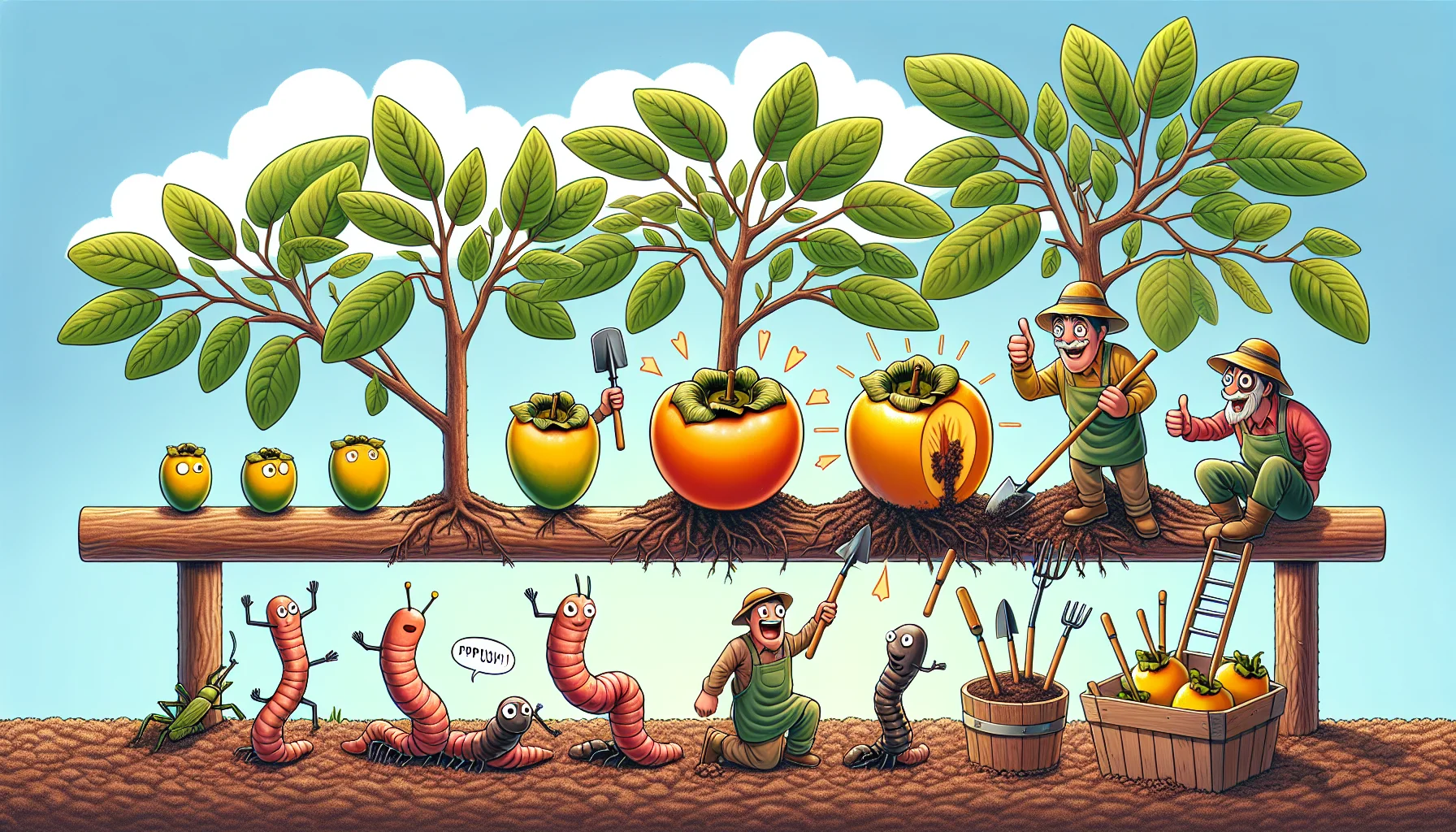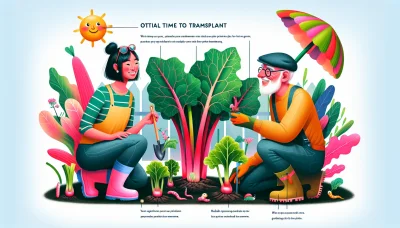When is a persimmon ripe Quiz
Test Your Knowledge
Question of
When Is a Persimmon Ripe?
Picking a persimmon at the right time is crucial for enjoying its best taste and texture. If harvested too early, persimmons can be extremely astringent and hard, making them unpleasant to eat. On the other hand, a perfectly ripe persimmon is sweet, with a soft and jelly-like texture that many find delightful. The timing of the harvest depends on the variety of persimmon and local climate conditions, but a general indicator is the fruit's color and a slight give when gently pressed. Understanding the right moment to pick persimmons ensures you get to experience the fruit's unique flavor and texture at its peak.
Types of Persimmons
Persimmons are a popular fruit known for their sweet, honey-like flavor. Among the various types, Fuyu and Hachiya persimmons are the most common. Each type has its unique characteristics and signs of ripeness, making them suitable for different culinary uses.
- Fuyu Persimmons: These are squat and somewhat flat in shape, resembling tomatoes. They are non-astringent, meaning they can be eaten while still firm. Fuyu persimmons are crunchy and sweet, perfect for eating raw in salads or as a snack. They turn bright orange when ripe.
- Hachiya Persimmons: Hachiya persimmons are acorn-shaped and are astringent when unripe. They need to be fully soft and ripe before eating, otherwise, they have a bitter taste. When ripe, they become very soft and jelly-like, ideal for baking or making persimmon pudding. Their color deepens to a dark orange when they are ready to eat.
Signs of Ripeness in Persimmons
Persimmons, a popular fruit known for their sweet, honey-like flavor, exhibit several key indicators when they reach peak ripeness. Understanding these signs can help ensure you enjoy the fruit at its best, avoiding the astringency found in unripe persimmons. Ripeness in persimmons is not always straightforward and can depend on the variety, such as the astringent Hachiya or the non-astringent Fuyu, but general principles apply to most types.
- Color Change: Persimmons develop a deep, rich color as they ripen. Hachiya persimmons turn a bright orange-red, while Fuyu persimmons take on a more orange-yellow hue.
- Softness: As persimmons ripen, they become softer to the touch. A ripe Hachiya will feel very soft, almost like a water balloon, indicating it's ready to eat. Fuyu persimmons, on the other hand, can be enjoyed when they are slightly soft or still firm.
- Detachment Ease: Ripe persimmons will detach easily from the tree with a gentle tug. This sign of ripeness is more relevant for those picking their own fruit directly from the tree.
How to Ripen Persimmons at Home
After picking persimmons, they often need some time to ripen to develop their full flavor and soft texture. One effective method to speed up the ripening process is to use paper bags and ethylene-producing fruits. Ethylene gas, naturally produced by many fruits, acts as a ripening agent and can encourage persimmons to ripen more quickly. This method is simple, efficient, and can be done with common household items.
- Start by selecting persimmons that are firm but not hard, with a deep orange color.
- Place the persimmons in a paper bag. Avoid using plastic bags as they can trap moisture and potentially lead to mold.
- Add an ethylene-producing fruit to the bag, such as an apple or a banana. These fruits will release ethylene gas, which accelerates the ripening process.
- Fold the top of the bag loosely to allow some air circulation while still trapping the ethylene gas inside.
- Store the bag at room temperature in a dry place away from direct sunlight.
- Check the persimmons daily for ripeness. You'll know they're ready when they feel slightly soft to the touch and have a sweet aroma.
- Once ripe, persimmons can be eaten immediately or stored in the refrigerator to slow further ripening.
Storing Ripe Persimmons
Storing ripe persimmons properly is crucial for maintaining their freshness and extending their shelf life. Persimmons, with their sweet, honey-like flavor, are a delightful fruit that can be enjoyed in various ways. However, due to their delicate nature, they require careful handling and specific storage conditions to prevent spoilage and ensure they remain delicious for as long as possible.
- Temperature: Keep ripe persimmons in the refrigerator. The ideal temperature range is between 32°F and 36°F (0°C to 2°C). This slows down the ripening process and helps preserve their texture and flavor.
- Container Types: Store persimmons in a plastic bag or an airtight container. If they are particularly ripe and soft, placing them in a single layer can prevent them from squashing each other.
- Handling: Handle persimmons gently to avoid bruising. Even slight pressure can cause damage to their delicate skin and flesh, leading to faster spoilage.
FAQs on Ripening Persimmons
| Question | Answer |
|---|---|
| Can you eat persimmons when they're still hard? | Yes, but the experience differs by variety. Astringent varieties like Hachiya are very bitter when hard and should be eaten fully ripe. Non-astringent varieties like Fuyu can be eaten hard, but they are sweeter when soft. |
| How long do persimmons take to ripen? | Ripening time can vary. At room temperature, persimmons can take a few days to over a week to ripen. Factors such as initial ripeness and ambient conditions affect the ripening process. |
| What are the signs a persimmon is ripe and ready to eat? | For astringent varieties, the fruit should be very soft to the touch. For non-astringent types, look for a deep orange color and a slight give under gentle pressure. Both types should have a sweet, fragrant aroma. |
| Can ripening be accelerated? | Yes, placing persimmons in a paper bag with an apple or banana can speed up the process. These fruits emit ethylene gas, which stimulates ripening. |
| Is it possible to ripen persimmons after they've been refrigerated? | Yes, although refrigeration slows down the ripening process, once removed and kept at room temperature, they will continue to ripen, albeit more slowly than if they had never been refrigerated. |












